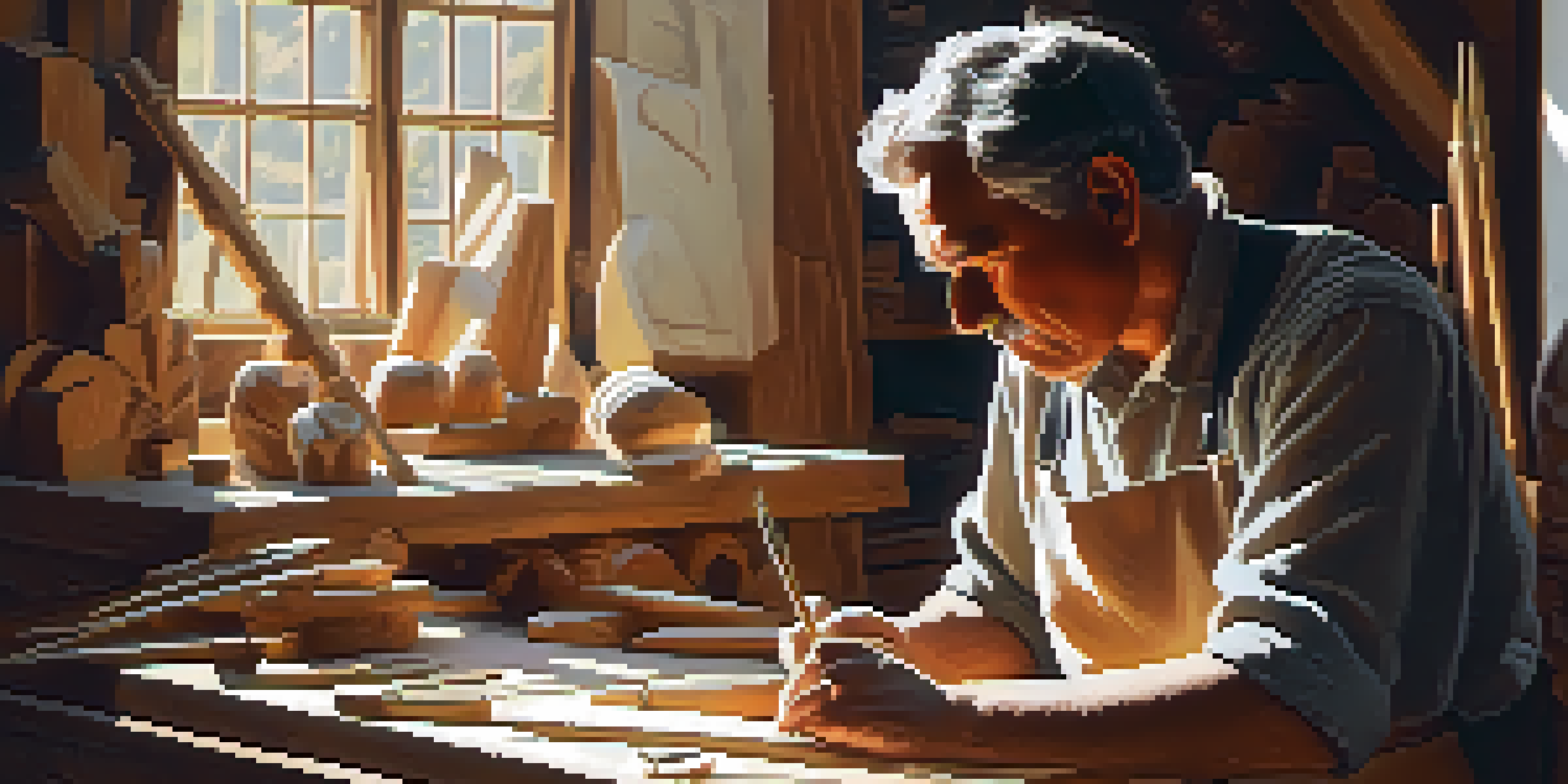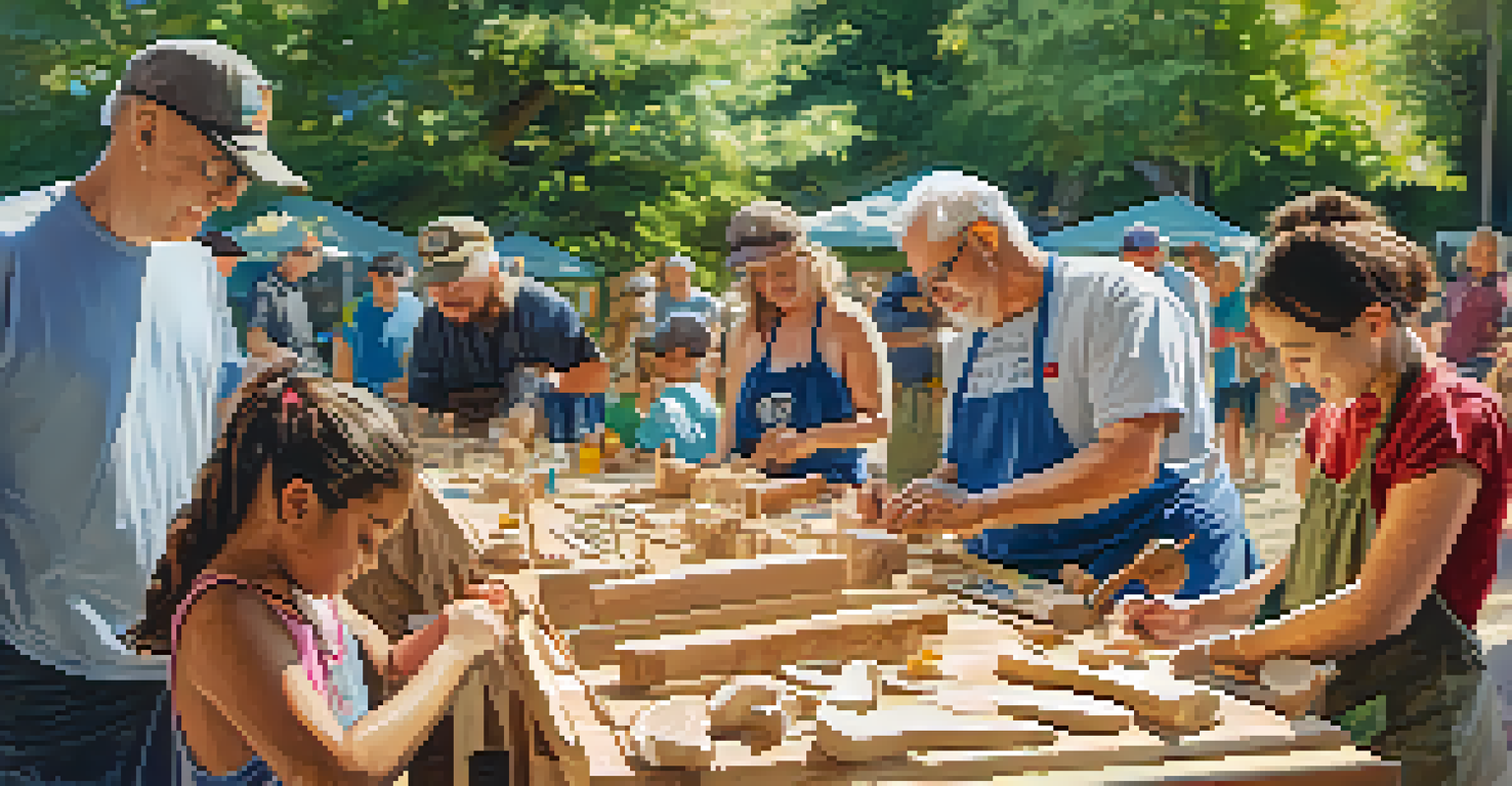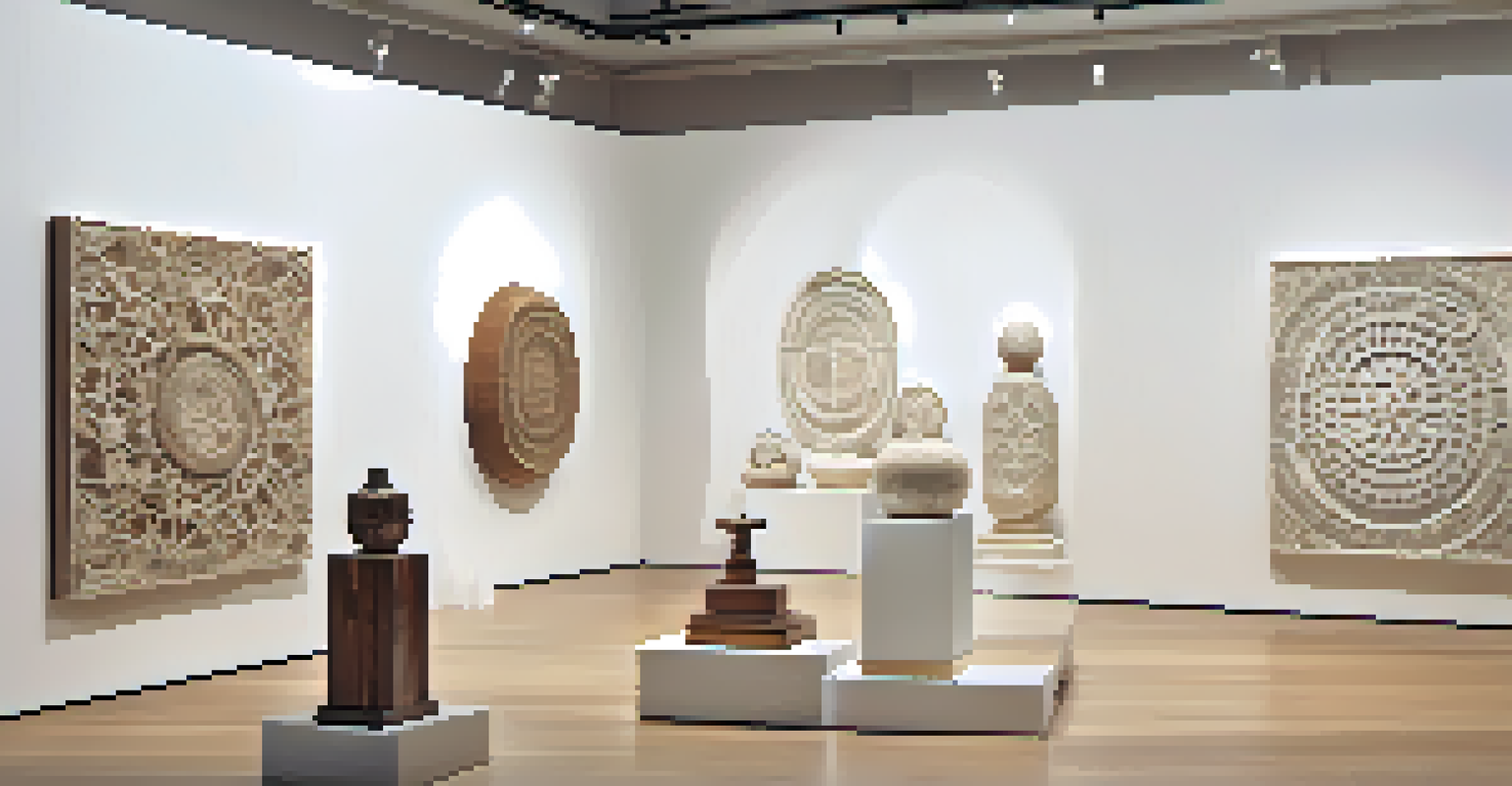Modern Carving Practices: Reviving Ancient Storytelling

The Art of Carving: A Timeless Tradition
Carving has been an essential form of artistic expression for centuries. From ancient civilizations to modern artists, this craft has served as a means to tell stories and convey emotions. The tactile nature of carving allows artists to create tangible narratives that resonate deeply with audiences. It's fascinating to see how this age-old practice continues to evolve while retaining its core purpose of storytelling.
Art is the most beautiful of all lies. It can tell truths that reality cannot.
As we look back, cultures around the world used carving to document their histories, beliefs, and significant events. For instance, Indigenous tribes in North America carved totem poles that depicted their lineage and important stories. Similarly, ancient Egyptians used hieroglyphics carved into stone to communicate their cultural narratives. These examples highlight how carving serves as a bridge connecting past and present through the power of visual storytelling.
Today, modern carvers are inspired by these historical practices, often blending traditional techniques with contemporary themes. This fusion not only honors the past but also reinvigorates the art form, making it relevant to new audiences. As artists explore innovative approaches, they continue to keep the spirit of storytelling alive through their craft.
Modern Carving Techniques and Innovations
In the realm of modern carving, technology plays a pivotal role in shaping new methodologies. Tools like CNC machines and laser cutters allow artists to explore intricate designs that were once labor-intensive. These advancements enable a level of precision that enhances the storytelling aspect by allowing for more detailed representations of ideas and emotions. However, many carvers still embrace traditional hand-carving to maintain a connection to their roots.

While technology has transformed the craft, it has also opened doors for artists to experiment with various materials. From wood and stone to modern composites and plastics, the choices are vast, allowing for incredible creativity. This variety leads to unique pieces that speak not only to individual stories but also to broader cultural narratives, making each artwork a conversation starter.
Carving: A Bridge Between Cultures
Carving serves as a powerful medium for storytelling that connects historical and contemporary narratives across various cultures.
Moreover, the rise of social media has created a platform for carvers to share their work and engage with a global audience. Artists can now showcase their projects in progress, providing insights into their creative processes. This visibility fosters community and encourages dialogue about the significance of their stories, enriching the carving tradition in the modern world.
Cultural Significance of Modern Carving
Carving in the modern era is not just about aesthetics; it often carries deep cultural significance. Many contemporary artists draw from their heritage, using carving to explore their identities and histories. This practice allows them to reclaim narratives that may have been lost or overshadowed, giving voice to their experiences through art. It becomes a powerful medium for self-expression and cultural preservation.
Every piece of art tells a story; it is up to the observer to listen.
For instance, artists of Indigenous descent may create carvings that reflect their traditions, spirituality, and ancestral stories. This not only educates others about their culture but also fosters respect and understanding. By intertwining personal and cultural narratives, modern carvers participate in a dialogue that transcends generations, inviting audiences to engage with history in a meaningful way.
Furthermore, the resurgence of interest in artisanal crafts has led to a renewed appreciation for carving as a legitimate form of storytelling. Exhibitions and galleries increasingly showcase this art, bridging gaps between ancient practices and contemporary issues. As these narratives unfold through carved pieces, they encourage viewers to reflect on their own stories and connections to the world.
Sustainability in Carving Practices
In today's environmentally-conscious world, sustainability is a crucial consideration for modern carvers. Many artists are now prioritizing the use of ethically sourced materials, such as reclaimed wood or sustainably harvested stone. This commitment not only reduces environmental impact but also adds depth to their storytelling, as the materials themselves often carry histories that resonate within the artwork.
Moreover, some artists are innovating with eco-friendly alternatives, such as bioplastics or repurposed materials, transforming waste into art. This approach challenges conventional notions of beauty and value, prompting viewers to rethink how they perceive materials and craftsmanship. By integrating sustainability into their practices, carvers are not only telling stories but also advocating for a healthier planet.
Sustainability in Modern Carving
Modern carvers are increasingly embracing sustainable practices, using ethically sourced materials to enhance their artistic storytelling.
As sustainability becomes a central theme in carving, it fosters a collective responsibility among artists and audiences alike. Engaging with artworks that focus on ecological concerns encourages conversations about our own roles in preserving the environment. Through these narratives, modern carving practice evolves into a platform for advocacy, merging art and activism.
Engaging Communities Through Carving Workshops
One of the most significant ways modern carvers are reviving storytelling is through community engagement. Workshops and classes have become popular avenues for sharing carving techniques and cultural narratives with others. This hands-on approach not only teaches skills but also fosters a sense of connection and belonging among participants, bridging generational gaps and cultural divides.
In these workshops, people from diverse backgrounds come together to explore their creativity while learning about the stories behind various carving techniques. Participants often leave with a deeper appreciation for the art form and the narratives it embodies. This communal experience transforms carving from a solitary practice into a shared journey, where each person's unique story contributes to the collective narrative.
Additionally, community carving projects, such as public installations or collaborative sculptures, can serve as powerful storytelling tools. These projects often reflect local history, values, or aspirations, allowing communities to express themselves artistically. As these stories come to life through collective effort, they not only beautify spaces but also strengthen community ties.
The Role of Technology in Storytelling
While traditional carving techniques remain vital, technology has added a new dimension to storytelling in this art form. Digital design software allows artists to conceptualize and visualize their ideas before they even touch the material. This process not only streamlines the creation of complex designs but also inspires innovative storytelling approaches that blend traditional and contemporary themes.
Moreover, virtual reality (VR) and augmented reality (AR) are emerging tools that carvers are exploring to enhance audience engagement. Imagine walking through an exhibition where you can see the story behind each carving come to life through interactive elements. This immersive experience allows viewers to connect with the artwork on a deeper level, transforming passive observation into an active exploration of storytelling.
Technology Enhances Artistic Expression
The integration of technology in carving allows artists to create more intricate designs and engage audiences through innovative storytelling methods.
As technology continues to evolve, so too does the potential for carving to reach wider audiences. Online platforms enable artists to showcase their work globally, breaking geographical barriers and sharing their stories with diverse communities. This digital realm presents exciting opportunities for collaboration and cross-cultural exchange, enriching the storytelling landscape of modern carving.
The Future of Carving and its Stories
Looking ahead, the future of carving seems bright as it continues to adapt and thrive in a rapidly changing world. The blend of tradition with innovation ensures that this art form remains relevant, allowing new stories to emerge while honoring the past. As more artists and communities engage with carving, we can expect to see a rich tapestry of narratives that reflect the complexities of contemporary life.
Moreover, as society increasingly values authenticity and personal connection, the demand for unique, handcrafted art is likely to grow. This trend may lead to a renaissance in carving practices, encouraging artists to explore deeper themes and narratives that resonate with audiences. The stories told through carving will evolve, reflecting our shared experiences, challenges, and triumphs.

Ultimately, the revival of ancient storytelling through modern carving practices underscores the enduring power of art to connect us all. As we carve our stories into the fabric of time, we celebrate the diversity of human experience and the universal desire to share our narratives. The future of carving is not just about the art itself; it's about the stories we tell and the connections we forge along the way.